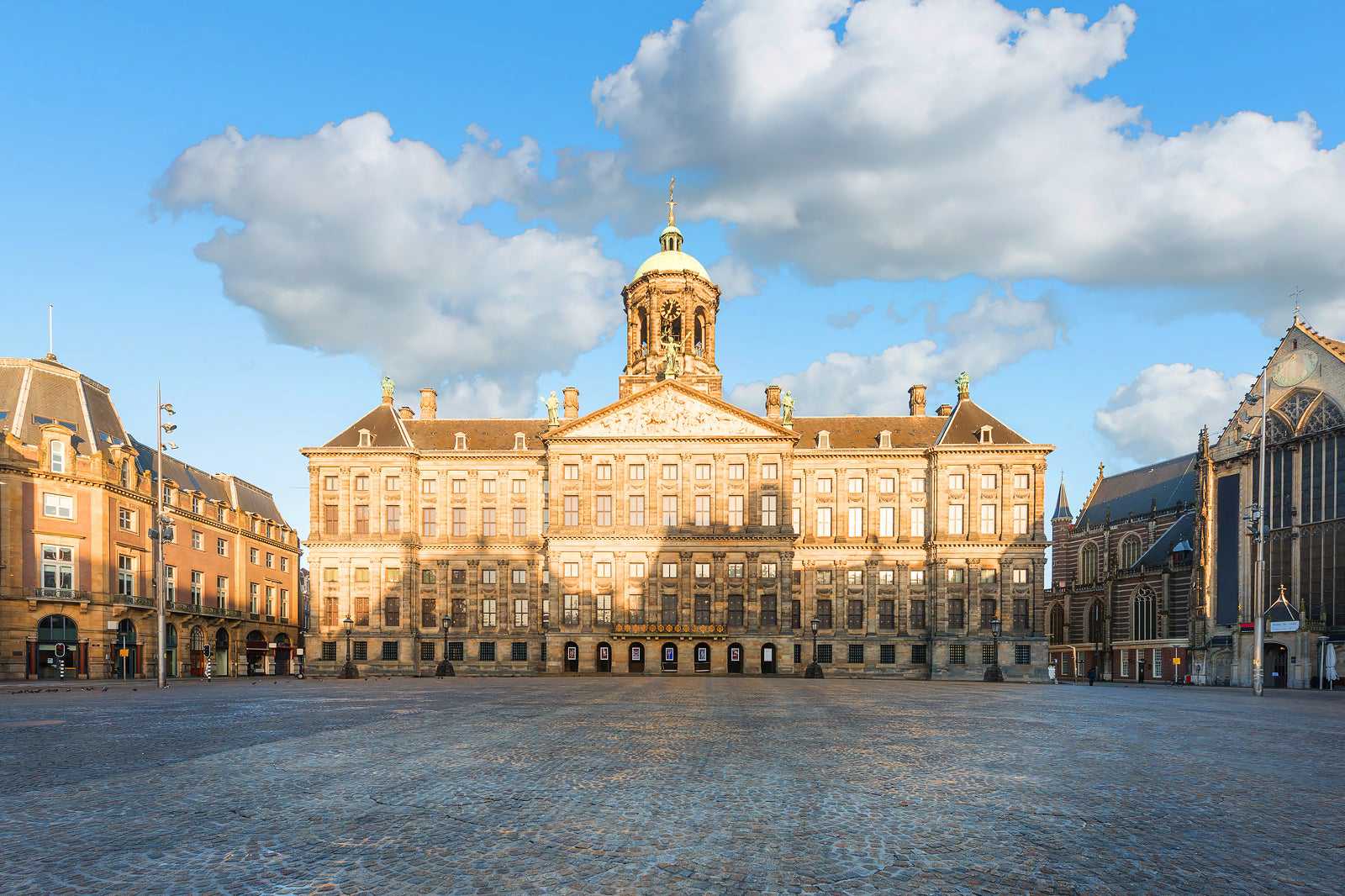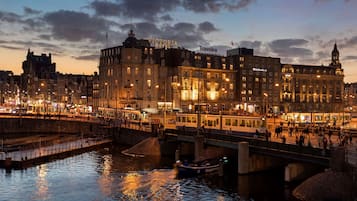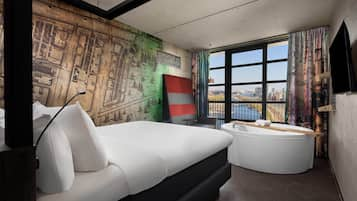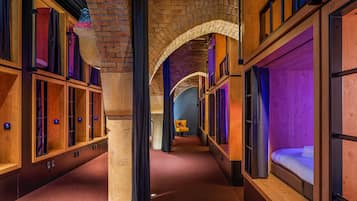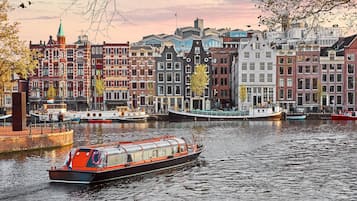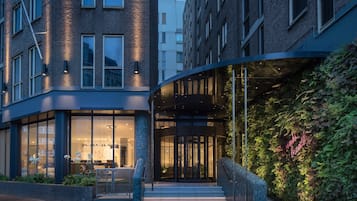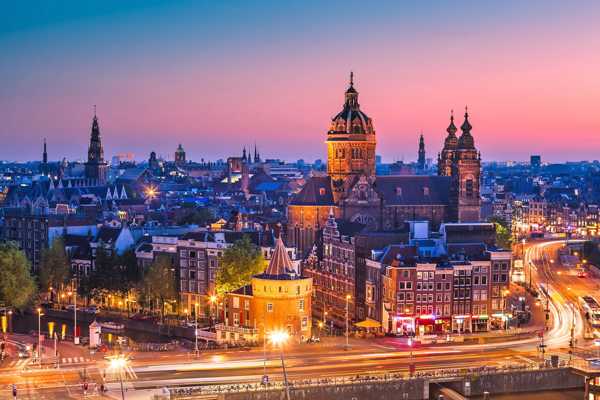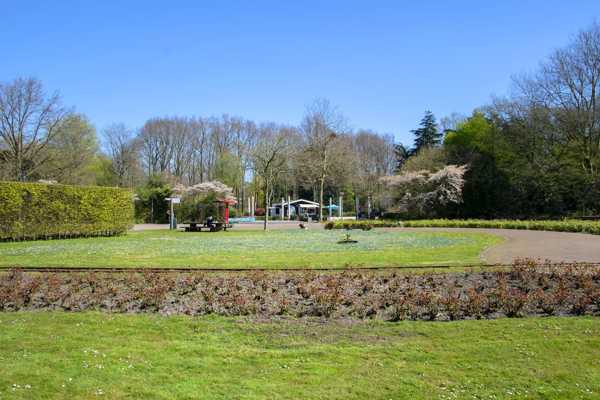The Royal Palace of Amsterdam is one of the city’s grandest buildings, which was commissioned during the Dutch Golden Age. During this period, the Dutch led the world in trade, science and art. The Dutch military was instrumental in helping to secure the country’s political, economic, and cultural greatness. The prestigious palace was built to mirror this.
Interestingly, despite its name, the city of Amsterdam owned the building right up until the 1930s. They allowed the monarch to use the palace but the Royal family didn’t wholly own it. In 1934, the city council sold the palace to the Dutch state. As Head of State, the monarch has the right to use the place as they see fit. Read on to learn more about this iconic Amsterdam landmark.
Royal Palace of Amsterdam - one of the highlights of 10 Most Instagrammable Places in Amsterdam and 10 Best Things to Do in Amsterdam (Read all about Amsterdam here)

A brief history of the Royal Palace of Amsterdam
The Royal Palace of Amsterdam began life as a civilian structure. Initially, it served as the Town Hall, housing officials, and magistrates. The city authorities hired architect Jan van Campen to design a building that would reflect Amsterdam’s wealth and importance. It opened on 29th July 1655 with then-mayor Cornelis de Graeff performing the ceremony.
On top of the building is a statue representing peace. The female figure holds an olive branch and a staff of Mercury. When it was originally placed on the Town Hall, its prominent position reinforced that the city’s merchants believed peace and trade should go hand in hand.
At the time, the nearby wharves would have been busy with sailing ships loading and unloading their cargoes. The maritime setting is quite a contrast to today’s urban outlook. Construction was a little tricky because of Amsterdam’s watery geography. Engineers had to sink over 13,000 wooden piles into the soft ground to form a more solid foundation for the building.
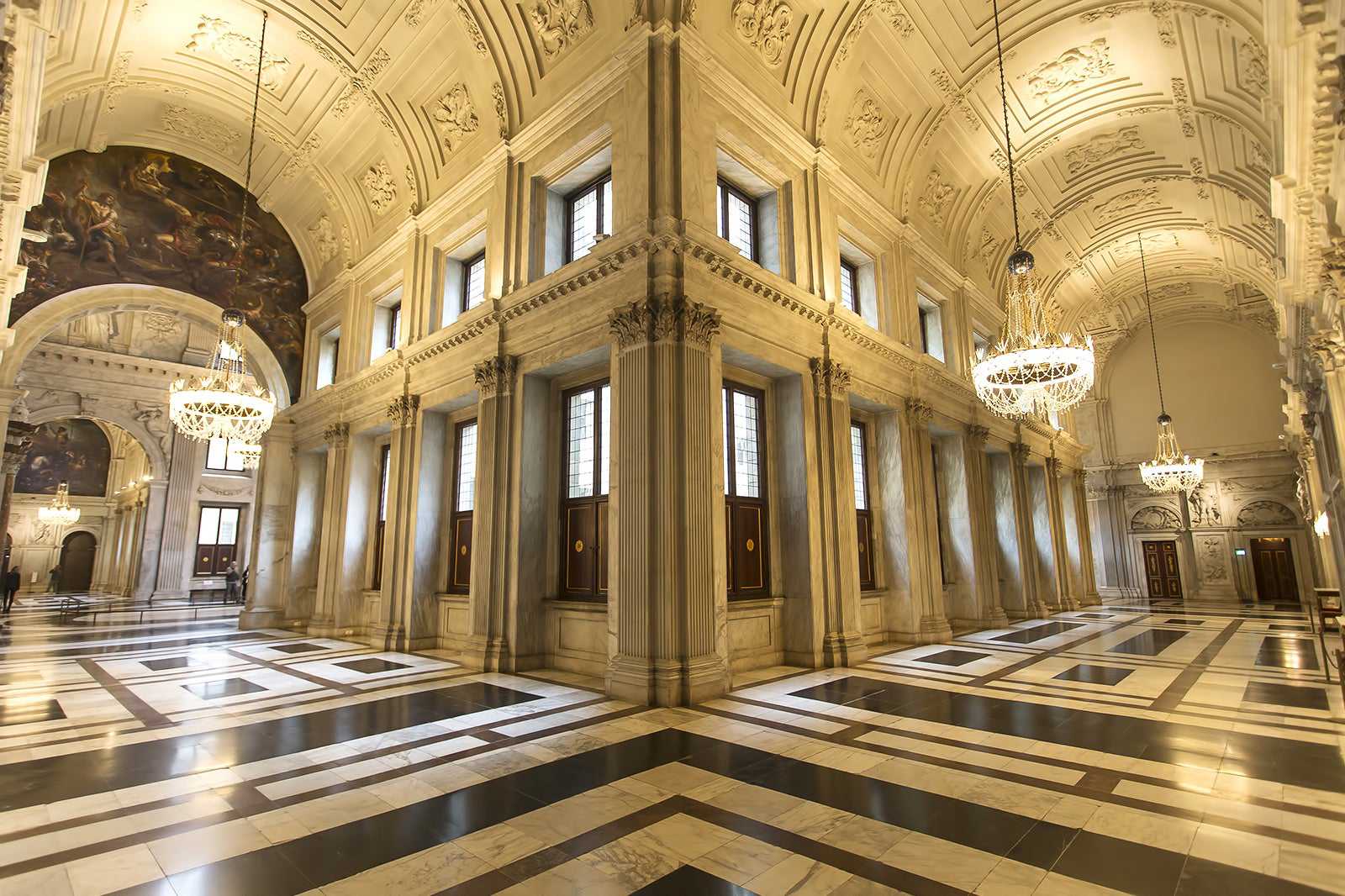
What are the highlights of the Royal Palace of Amsterdam?
King Louis Bonaparte, the younger brother of Napoleon I of France, ruled over the Kingdom of Holland (largely what’s now The Netherlands) from 1805 to 1810. In 1808, he commandeered the Town Hall and turned it into a lavish palace. As the most splendid building of the era, it was an obvious choice. But it was a very hurried transformation. In fact, just 2 years later, Louis would be forced to step down after he fell out with his sibling.
Under Bonaparte’s orders, expensive carpets were laid on the floors and silks hung on the walls. Workmen hung dazzling chandeliers from the ceilings. They filled the cellars with bottles of wine and the rooms above with furnishings fit for a monarch. The finest chairs, tables, wardrobes and beds were imported from France.
Perhaps the most noticeable alteration, however, was on the exterior facade. There, he added a balcony. He justified the decision by announcing that his people needed to see their king. Even today, the bridal party for Dutch Royal weddings makes an appearance on that same balcony to watch the newlyweds’ first kiss as a married couple.
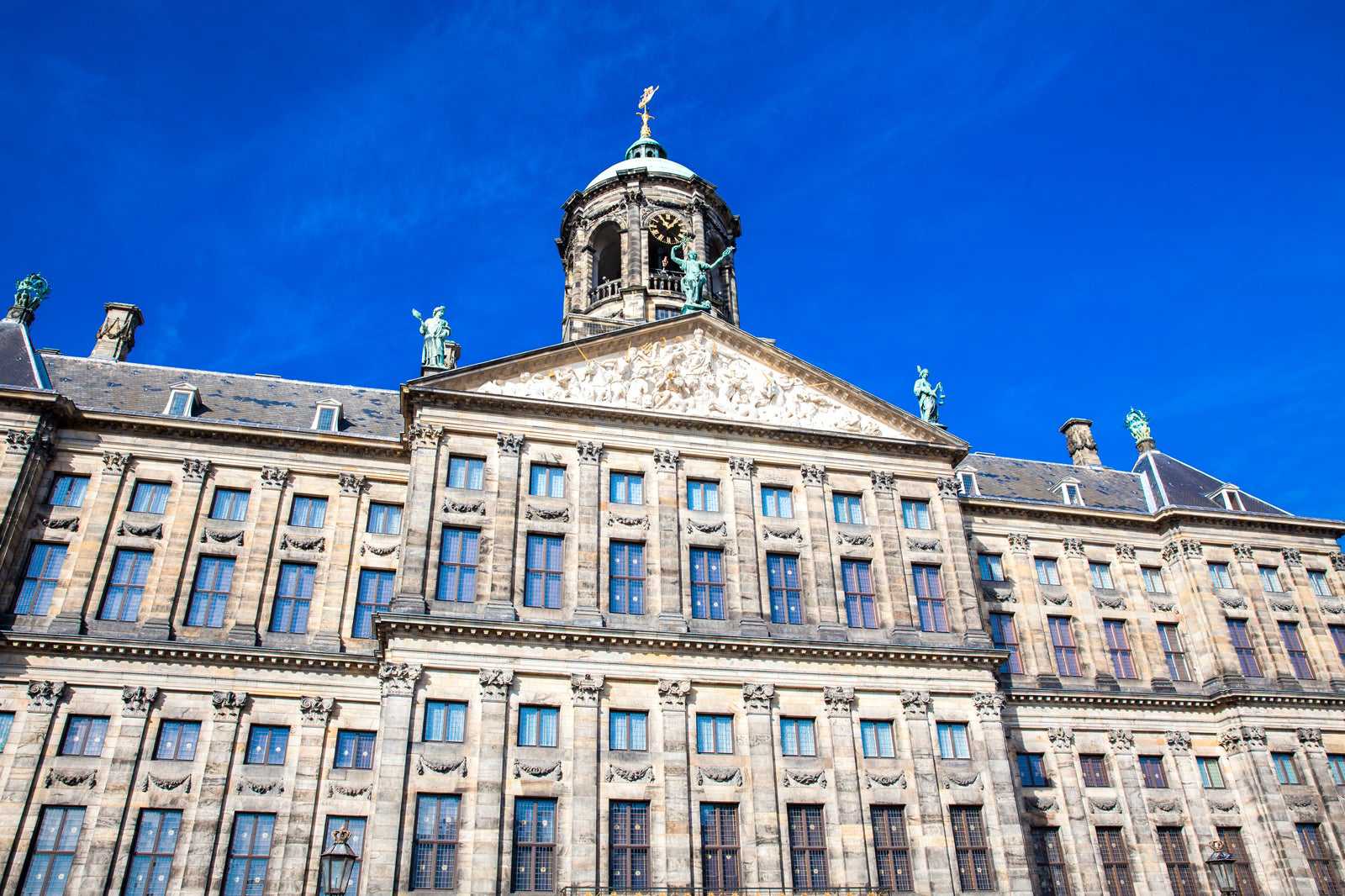
What to see on a guided tour of the Royal Palace of Amsterdam?
These days, the Royal Palace of Amsterdam is the business hub of the Dutch monarchy, similar in role to the UK’s Buckingham Palace. This is where King Willem-Alexander bestows awards and hosts visiting dignitaries for state visits. Each visit follows a similar pattern: an inspection of the military guard of honour on Dam Square, followed with the laying of a wreath on the National Monument. Later, a full gala dress is required for a state banquet in the breathtaking Citizen’s Hall.
The marble galleries and priceless works of art undoubtedly impress visiting guests as much as those who take a guided tour of the palace. Rembrandt created some of these sculptures and paintings, as did his students, like Govert Flinck and Ferdinand Bol.

Good to know about the Royal Palace of Amsterdam
The Royal Palace of Amsterdam is in the city centre, facing Dam Square. It's within a 10-minute walk from the Amsterdam Centraal railway station, following Damrak to Dam Square.
Entrance is permitted for pre-booked ticket-holders only. Tours only take place when there are no state events at the palace. Most are general tours conducted by a qualified art historian. Sometimes special themed tours are available, such as those focusing on Bonaparte’s time in residence.
Royal Palace of Amsterdam
Localização: Nieuwezijds Voorburgwal 147, 1012 RJ Amsterdam, Netherlands
Telefone: +31 (0)20 522 6161
